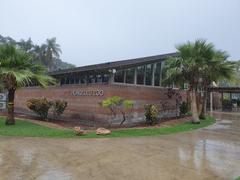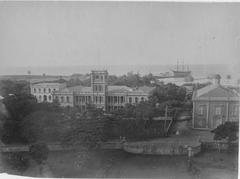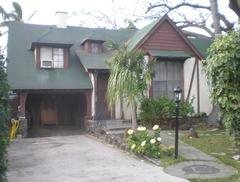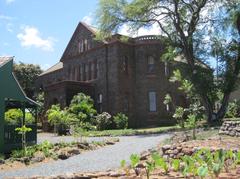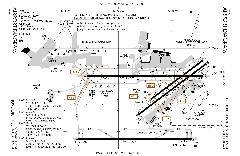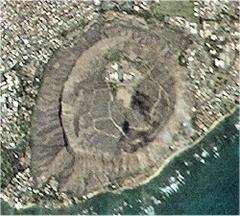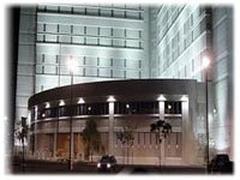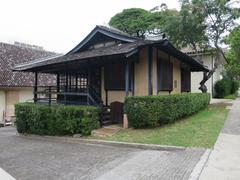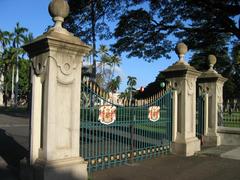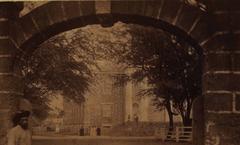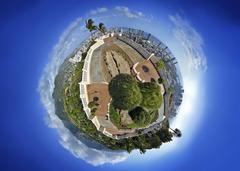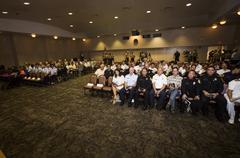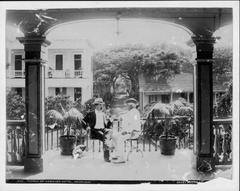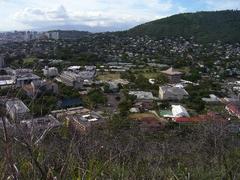
Honolulu Zoo Visiting Hours, Tickets, and Travel Guide
Date: 15/06/2025
Introduction to the Honolulu Zoo
Nestled in the heart of Waikīkī within the historic Queen Kapiʻolani Park, the Honolulu Zoo is a unique blend of cultural significance, ecological diversity, and community spirit. Established on royal Hawaiian land granted by King David Kalākaua in 1876, it remains the only American zoo founded by a sovereign monarch, making it a living testament to Hawaiʻi’s rich heritage. Today, the zoo spans 42 acres and is home to over 1,230 animals representing more than 900 species. It serves as both a popular family-friendly destination and a vital center for wildlife conservation, particularly for native Hawaiian species such as the endangered nēnē (Hawaiian goose), alongside global conservation initiatives for species like the Sumatran tiger and Komodo dragon.
Visitors can explore immersive ecological zones, participate in interactive educational programs, and enjoy special events such as twilight tours and summer concerts. With accessible facilities, shaded walkways, cafés, and gift shops, the Honolulu Zoo is designed to welcome guests of all ages and abilities. This guide provides comprehensive information on visiting hours, ticketing, exhibit highlights, practical tips, conservation programs, and more to help you plan a memorable visit. For the latest updates, tickets, and event schedules, visit the official Honolulu Zoo website (source 1, source 2, source 3, source 4).
Table of Contents
- Introduction
- History and Royal Origins
- Zoo Layout and Thematic Zones
- Animal Collection and Signature Species
- Botanical Gardens and Native Plants
- Conservation and Education Programs
- Visitor Amenities and Facilities
- Visiting Hours and Ticket Information
- Special Experiences and Events
- Visitor Tips and Etiquette
- Accessibility and Family Considerations
- Parking and Directions
- Future Challenges and Conservation Efforts
- Frequently Asked Questions (FAQ)
- Conclusion & Call to Action
- Sources
History and Royal Origins
The Honolulu Zoo’s foundation is intertwined with Hawaii’s royal past. In 1876, King David Kalākaua designated 300 acres of royal land as Queen Kapiʻolani Park for public use, initially featuring fishponds, marshlands, and a racetrack. The king’s collection of exotic birds laid the groundwork for a celebrated aviary, which later expanded under city management after the monarchy’s overthrow. Officially established as a zoo in 1947, the park evolved to house mammals, reptiles, and birds, with notable early residents like Daisy the African elephant. Despite periods of disrepair, revitalization in the 1970s and 1980s ushered in a new era of naturalistic habitats and a strong conservation mission.
Zoo Layout and Thematic Zones
Covering 42 acres within Queen Kapiʻolani Park, the Honolulu Zoo is thoughtfully organized into four main thematic zones:
- African Savanna: Replicates African grasslands, housing giraffes, zebras, lions, and elephants in open, mixed-species habitats.
- Tropical Forests: Lush, shaded areas featuring primates, reptiles, and birds from Asia and the Americas.
- Pacific Islands: Focuses on Hawaii’s unique biodiversity, including the nēnē and other island species.
- Children’s Zoo (Keiki Zoo): Interactive space for hands-on encounters with domesticated animals and engaging educational play areas.
A downloadable Honolulu Zoo map is available to help visitors plan their route.
Animal Collection and Signature Species
With approximately 1,230 animals representing 900+ species, the Honolulu Zoo emphasizes tropical and endangered species, as well as animals significant to Hawaii’s culture:
African Savanna
- African elephants
- Giraffes
- Zebras, lions, black rhinoceroses
- African penguins
Tropical Forests
- Sumatran tigers (critically endangered)
- Orangutans (part of Borneo conservation efforts)
- Komodo dragons
- Spider monkeys and other primates
Pacific Islands
- Nēnē (Hawaiian goose)
- Laysan teal, Marianas fruit dove
- South-East Asian river terrapin
Children’s Zoo (Keiki Zoo)
- Goats, ponies, guinea pigs, rabbits, chickens
- Animal encounters and educational playgrounds
Botanical Gardens and Native Plants
The zoo doubles as a living botanical garden, featuring native Hawaiian and Pacific plants such as hibiscus, hala, kou, lehua, and a’ali’i. These gardens offer educational insight into Hawaii’s flora and its cultural and ecological importance (source 2).
Conservation and Education Programs
The Honolulu Zoo is dedicated to inspiring stewardship of the natural world through:
- Zoo to You Outreach: Public education on local species and invasive threats.
- Orangutan Outreach: Supports reforestation and rehabilitation efforts in Borneo.
- Endangered Species Protection: Breeding programs for nēnē, Sumatran tigers, black rhinos, and Komodo dragons.
- Saturday Morning Safari Tours: Behind-the-scenes experiences highlighting animal care and conservation (source 4).
The zoo is a participant in the Association of Zoos and Aquariums (AZA) Species Survival Plan (SSP), collaborating globally to maintain genetically healthy animal populations (source 3).
Visitor Amenities and Facilities
- Dining: On-site cafés and snack bars; picnic areas for those bringing nut-free food.
- Rest Areas & Shade: Shaded benches and grassy lawns throughout.
- Playgrounds: Spacious play areas for children.
- Gift Shop: Souvenirs, educational toys, and local crafts.
- Restrooms & Water Stations: Conveniently located.
- Accessibility: Paved paths and ramps, wheelchair and stroller rentals available (source 3).
Visiting Hours and Ticket Information
| Information | Details |
|---|---|
| Location | 151 Kapahulu Ave, Honolulu, HI 96815 |
| Hours | Daily 9:00 AM – 4:30 PM (last entry 4:00 PM) |
| Admission | Adults (13–64): $19; Children (3–12): $11; Seniors (65+): $15; Under 3: Free |
| Tickets | Purchase online or at the gate |
| Facilities | Café, gift shop, snack bars, restrooms, playground, Education Center |
| Accessibility | Wheelchair/stroller accessible, shaded walkways, rentals available |
Honolulu residents with valid ID receive free admission. Special event hours may vary; check the website for updates.
Special Experiences and Events
- Twilight Tours: After-hours exploration focused on nocturnal animal behavior (advance reservation required).
- Guided Walking Tours: Family-friendly tours led by educators.
- Zoo Camp Programs: Immersive camps for children during school breaks and summer.
- Wildest Show in Town: Summer concert series with live music and family activities.
Visitor Tips and Etiquette
- Arrive Early: Enjoy cooler temperatures and active animals.
- Plan Your Route: Download the zoo map in advance.
- Stay Hydrated and Protected: Bring water, sunscreen, and hats.
- Dress Comfortably: Lightweight clothing and comfortable shoes are recommended.
- Respect the Animals: Do not feed or disturb; keep noise levels low.
- Check Event Schedules: For talks, feedings, and seasonal activities.
- Photography: Personal photos encouraged; commercial photography requires approval.
- Combine Visits: Nearby attractions include Waikiki Aquarium and Waikiki Beach.
Accessibility and Family Considerations
- Wheelchair/Stroller Rentals: Available at the entrance on a first-come, first-served basis.
- Children’s Activities: Keiki Zoo offers hands-on animal encounters.
- Restrooms & Changing Tables: Located throughout the zoo.
- Accessibility: Most paths are wheelchair and stroller friendly; contact the zoo for special arrangements (source 2).
Parking and Directions
- Zoo Parking Lot: $1.50 per hour (four-hour maximum), located on Kapahulu Avenue.
- Waikiki Shell Parking Lot: Free but limited, especially during busy times.
- Public Transit & Walking: Easily accessible from Waikiki hotels.
- Disabled Parking: Metered, unless holding a Disability Paid Parking Exemption Permit (source 3).
Future Challenges and Conservation Efforts
The Honolulu Zoo faces several ongoing challenges:
- Funding & Resources: As a municipal institution, stable funding is vital for facility maintenance and staff retention (Hawaii Public Radio).
- Leadership & Accreditation: Consistent direction is needed for AZA accreditation and long-term planning.
- Urban Constraints: Expansion is limited by its Waikīkī location.
- Climate Change: Conservation strategies are continually adapting to environmental threats (Biological Conservation).
Despite these challenges, the zoo remains committed to animal care, global conservation, and public education.
Frequently Asked Questions (FAQ)
Q: What are the Honolulu Zoo’s visiting hours?
A: Daily 9:00 AM – 4:30 PM; last entry at 4:00 PM.
Q: How much are tickets?
A: $19 for adults, $11 for children (3–12), $15 for seniors, under 3 free.
Q: Can I purchase tickets online?
A: Yes, via the Honolulu Zoo website.
Q: Is the zoo wheelchair accessible?
A: Yes, with paved paths and accessible facilities.
Q: Are pets allowed?
A: No, except for service animals.
Q: Are there guided tours?
A: Yes, including walking and twilight tours (advance booking recommended).
Q: Can I bring food?
A: Nut-free snacks are allowed; outside food with nuts is prohibited.
Conclusion & Call to Action
The Honolulu Zoo is much more than a place to see wild animals—it is a living tribute to Hawaii’s royal heritage, a leader in conservation, and a welcoming space for education and family fun. Whether you’re a resident or a visitor, planning ahead will help you enjoy a seamless and rewarding adventure. Use the official Honolulu Zoo website, download the Audiala app for interactive tours, and follow the zoo on social media for the latest news and events. Your visit directly supports wildlife conservation and educational outreach, ensuring future generations can experience Hawaiʻi’s living treasures.
Sources
- Honolulu Zoo Official Website
- Hawaii Guide: Visiting Hours, Tickets, and Top Attractions
- Visitor Information and Practical Tips
- Awesome Animals: Morning Safari Tours
- Hawaii Public Radio – Honolulu Zoo: Past, Present, and Future
- Biological Conservation Journal


